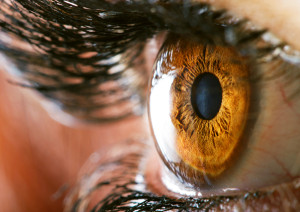 Where Is the Cornea?
Where Is the Cornea?
Before we talk about a disease that affects the cornea, you need to know what and where the cornea is. The cornea is essentially the outer layer of the eye. It’s job is both to protect the eye and to also refract light as it enters the eye. Think of the cornea as a the clear, plastic, protective covering used in packaging that is almost impossible to cut. Unfortunately, however, the cornea is more susceptible to damage than that.
What Is a Dystrophy?
In short, a corneal dystrophy is a disease that affects the cornea’s structure. Since it is both a protective and refractive layer, dystrophy can seriously affect both your vision and the health of your eye.
Fuchs’ Dystrophy
A genetically inherited condition that causes cells to deteriorate, eyes with Fuchs’ slowly start to lose vision. This is because the cell deterioration makes the cornea less able to remove water, and so it swells and vision becomes distorted.
Other symptoms include haziness, small blisters, and blurred vision that gradually clears up during the day. Those with Fuchs’ are more likely to develop cataracts. Despite all of these negative symptoms, the disease is very slow moving. Even if the signs appear while in your 30s, you might not lose your sight until you are in your 50s or even 60s. It usually takes about 20 years for the dystrophy to fully affect your vision.
Treatment for Fuchs’
While Fuchs’ can temporarily be treated using eye drops or by drying out the cornea with a hair dryer, the best solution for a serious case is a corneal transplant. It might seem weird that we would be able to remove and transplant the thin layer in front of the eye, but it is possible. If you are thinking about having a corneal transplant, come in and consult with us.


